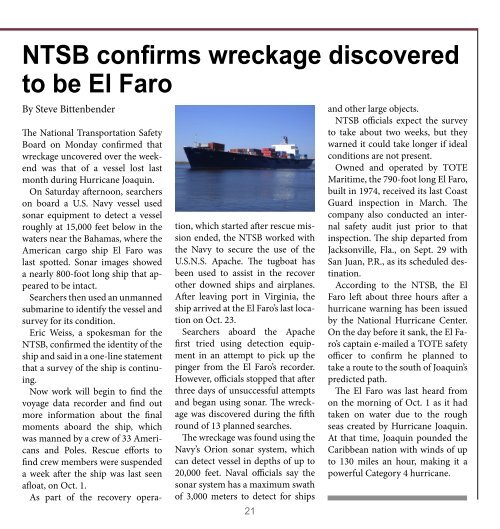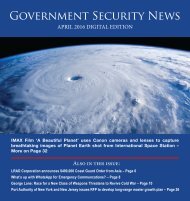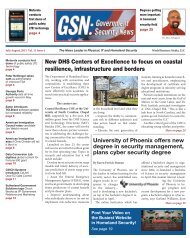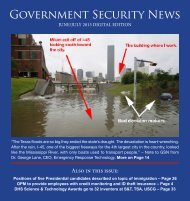October/November 2015 Digital Edition
You also want an ePaper? Increase the reach of your titles
YUMPU automatically turns print PDFs into web optimized ePapers that Google loves.
NTSB confirms wreckage discovered<br />
to be El Faro<br />
by Steve bittenbender<br />
The National transportation Safety<br />
board on monday confirmed that<br />
wreckage uncovered over the weekend<br />
was that of a vessel lost last<br />
month during Hurricane Joaquin.<br />
On Saturday afternoon, searchers<br />
on board a U.S. Navy vessel used<br />
sonar equipment to detect a vessel<br />
roughly at 15,000 feet below in the<br />
waters near the bahamas, where the<br />
american cargo ship el Faro was<br />
last spotted. Sonar images showed<br />
a nearly 800-foot long ship that appeared<br />
to be intact.<br />
Searchers then used an unmanned<br />
submarine to identify the vessel and<br />
survey for its condition.<br />
eric Weiss, a spokesman for the<br />
NtSb, confirmed the identity of the<br />
ship and said in a one-line statement<br />
that a survey of the ship is continuing.<br />
Now work will begin to find the<br />
voyage data recorder and find out<br />
more information about the final<br />
moments aboard the ship, which<br />
was manned by a crew of 33 americans<br />
and Poles. rescue efforts to<br />
find crew members were suspended<br />
a week after the ship was last seen<br />
afloat, on Oct. 1.<br />
as part of the recovery operation,<br />
which started after rescue mission<br />
ended, the NtSb worked with<br />
the Navy to secure the use of the<br />
U.S.N.S. apache. The tugboat has<br />
been used to assist in the recover<br />
other downed ships and airplanes.<br />
after leaving port in virginia, the<br />
ship arrived at the el Faro’s last location<br />
on Oct. 23.<br />
Searchers aboard the apache<br />
first tried using detection equipment<br />
in an attempt to pick up the<br />
pinger from the el Faro’s recorder.<br />
However, officials stopped that after<br />
three days of unsuccessful attempts<br />
and began using sonar. The wreckage<br />
was discovered during the fifth<br />
round of 13 planned searches.<br />
The wreckage was found using the<br />
Navy’s Orion sonar system, which<br />
can detect vessel in depths of up to<br />
20,000 feet. Naval officials say the<br />
sonar system has a maximum swath<br />
of 3,000 meters to detect for ships<br />
21<br />
and other large objects.<br />
NtSb officials expect the survey<br />
to take about two weeks, but they<br />
warned it could take longer if ideal<br />
conditions are not present.<br />
Owned and operated by tOte<br />
maritime, the 790-foot long el Faro,<br />
built in 1974, received its last coast<br />
guard inspection in march. The<br />
company also conducted an internal<br />
safety audit just prior to that<br />
inspection. The ship departed from<br />
Jacksonville, Fla., on Sept. 29 with<br />
San Juan, P.r., as its scheduled destination.<br />
according to the NtSb, the el<br />
Faro left about three hours after a<br />
hurricane warning has been issued<br />
by the National Hurricane center.<br />
On the day before it sank, the el Faro’s<br />
captain e-mailed a tOte safety<br />
officer to confirm he planned to<br />
take a route to the south of Joaquin’s<br />
predicted path.<br />
The el Faro was last heard from<br />
on the morning of Oct. 1 as it had<br />
taken on water due to the rough<br />
seas created by Hurricane Joaquin.<br />
at that time, Joaquin pounded the<br />
caribbean nation with winds of up<br />
to 130 miles an hour, making it a<br />
powerful category 4 hurricane.
















